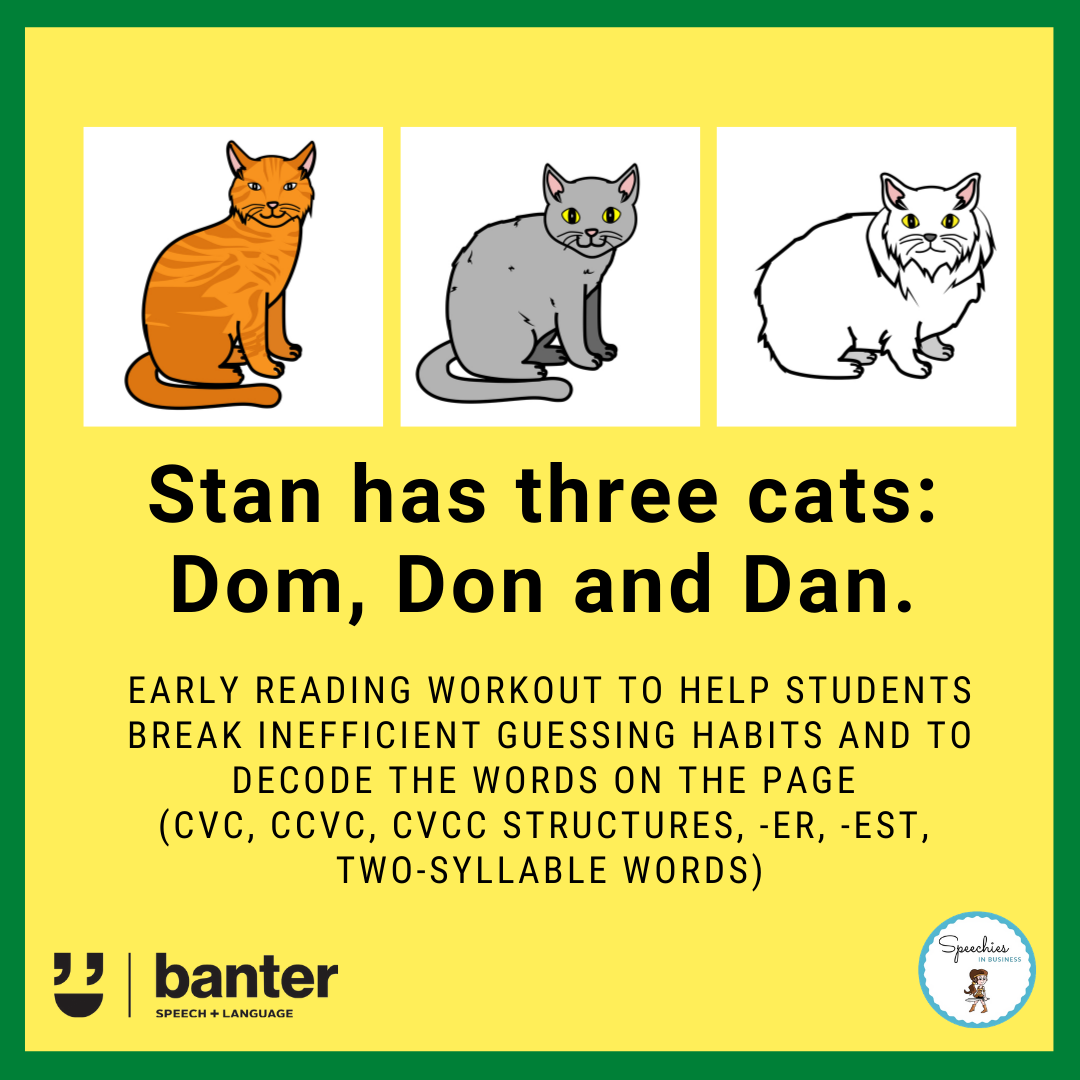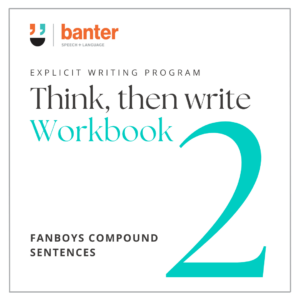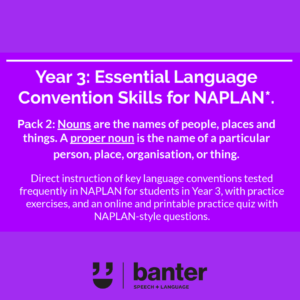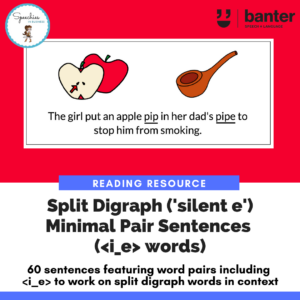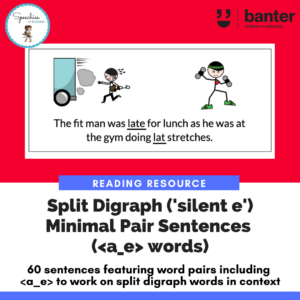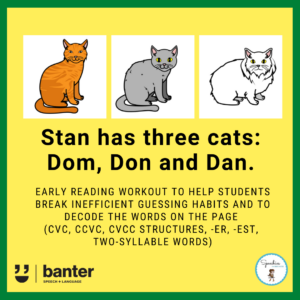(R215) Early Reading Workout – Stan has three cats: Dom, Don and Dan (CVC, CVCC, CCVC)
$4.99 including GST
This 10-page workout is designed to show students the importance of decoding left to right, all the way through words, and to not guess. Featuring three cats with similar – but different – names, features, and interests, this exercise is designed to help catch and eliminate barriers to fluent decoding.
To make the exercise slightly more challenging, we have loaded the passages with consonant-vowel-consonant (CVC), consonant-consonant-vowel-consonant (CCVC) and consonant-vowel-consonant-consonant (CVCC) words; as well as high-frequency bound morphemes <-er> and <-est>, to help support children to read common comparative and superlative adjectives.
Description
Early reading workout to help students break inefficient guessing habits and to decode the words on the page (CVC, CCVC, CVCC structures, -er, -est, two-syllable words)
Too many students guess words based on pictures, the first letter, or “general shape”. Unfortunately, these strategies, which become less useful and in many cases counter-productive when students encounter books with fewer pictures, less predictable text, and words they may never have encountered. Old “guessing” habits can be a big barrier when kids make the transition from learning to read to reading to learn.
This 10-page workout is designed to show students the importance of decoding left to right, all the way through words, and to not guess. Featuring three cats with similar – but different – names, features, and interests, this exercise is designed to help catch and eliminate barriers to fluent decoding.
To make the exercise slightly more challenging, we have loaded the passages with consonant-vowel-consonant (CVC), consonant-consonant-vowel-consonant (CCVC) and consonant-vowel-consonant-consonant (CVCC) words; as well as high-frequency bound morphemes <-er> and <-est>, to help support children to read common comparative and superlative adjectives.
More information and resources
For free, evidence based on effective reading instruction, check out these articles:
- Is your child struggling to read? Here’s what works
- Too many children can’t read. We know what to do, but how should we do it?
For free, decodable stories focusing on the basic code, check out: Is your Kindy kid really reading? Find out with our 7 free mini stories
- CCVC Words in Sentences: Is Stan a brat?
- CVCC Words in Sentences: Wendy has zest!
- Split digraph minimal pair sentences
- Polysyllabic words in sentences
For our ‘Select-your-Sequel’ adventure series of decodable texts for 7-12 year-olds focusing on the extended code and reading fluency – including the free first book – check out The Scatter-Slayer Adventures.

